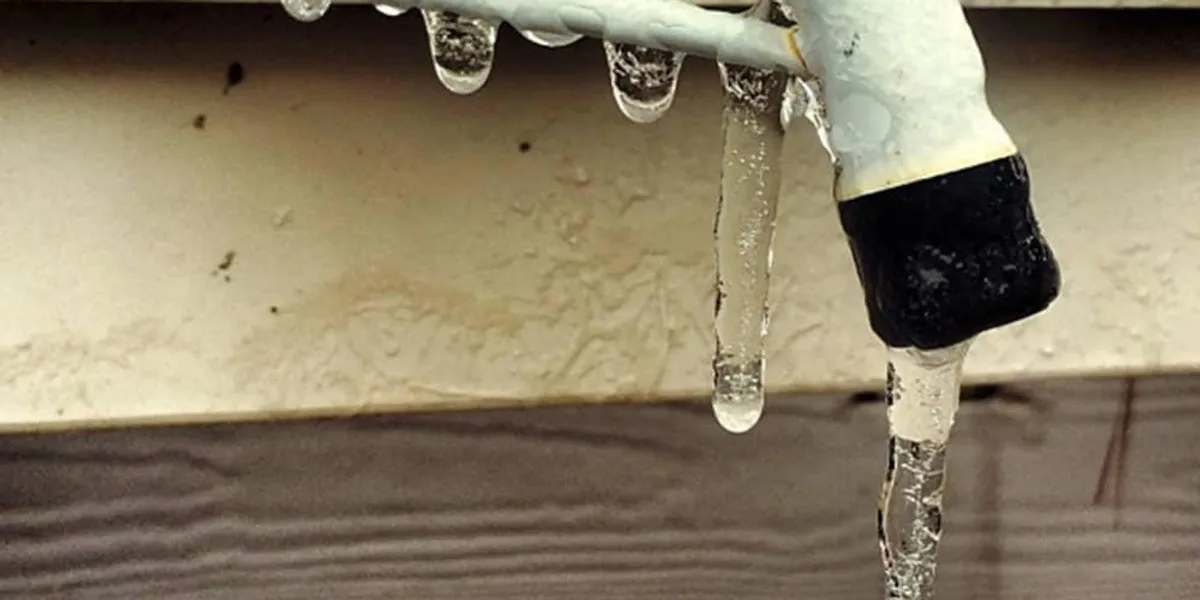The content below relating to How To Avoid Freezing Pipes is definitely interesting. Read it for your own benefit and decide what you think of it.

Cold weather can damage your pipes, especially by freezing pipes. Right here's exactly how to avoid it from taking place and what to do if it does.
Intro
As temperature levels decline, the threat of frozen pipes rises, possibly causing costly repair work and water damage. Comprehending just how to stop icy pipelines is essential for house owners in cold climates.
Prevention Tips
Protecting at risk pipelines
Cover pipes in insulation sleeves or make use of warmth tape to safeguard them from freezing temperatures. Focus on pipes in unheated or outside areas of the home.
Heating strategies
Keep interior spaces sufficiently warmed, specifically locations with plumbing. Open up cupboard doors to allow warm air to flow around pipes under sinks.
How to recognize frozen pipes
Search for lowered water flow from taps, uncommon odors or sounds from pipelines, and noticeable frost on exposed pipes.
Long-Term Solutions
Architectural adjustments
Think about rerouting pipes far from outside wall surfaces or unheated locations. Add added insulation to attic rooms, cellars, and crawl spaces.
Upgrading insulation
Invest in premium insulation for pipelines, attic rooms, and walls. Appropriate insulation assists maintain constant temperatures and decreases the danger of icy pipes.
Securing Exterior Plumbing
Yard pipes and exterior faucets
Detach and drain garden hoses before winter season. Install frost-proof spigots or cover outside taps with insulated caps.
Recognizing Frozen Pipes
What triggers pipes to ice up?
Pipes ice up when subjected to temperatures below 32 ° F (0 ° C) for prolonged durations. As water inside the pipes ices up, it broadens, taxing the pipeline walls and potentially creating them to break.
Risks and problems
Frozen pipelines can cause water supply disturbances, residential property damage, and expensive fixings. Burst pipelines can flood homes and cause comprehensive architectural damages.
Indications of Frozen Pipes
Recognizing icy pipes early can avoid them from rupturing.
What to Do If Your Pipelines Freeze
Immediate actions to take
If you believe icy pipelines, keep taps available to eliminate pressure as the ice melts. Use a hairdryer or towels soaked in warm water to thaw pipelines slowly.
Final thought
Avoiding icy pipelines requires positive steps and quick feedbacks. By understanding the reasons, indicators, and safety nets, homeowners can protect their pipes during cold weather.
5 Ways to Prevent Frozen Pipes
Drain Outdoor Faucets and Disconnect Hoses
First, close the shut-off valve that controls the flow of water in the pipe to your outdoor faucet. Then, head outside to disconnect and drain your hose and open the outdoor faucet to allow the water to completely drain out of the line. Turn off the faucet when done. Finally, head back to the shut-off valve and drain the remaining water inside the pipe into a bucket or container. Additionally, if you have a home irrigation system, you should consider hiring an expert to clear the system of water each year.
Insulate Pipes
One of the best and most cost-effective methods for preventing frozen water pipes is to wrap your pipes with insulation. This is especially important for areas in your home that aren’t exposed to heat, such as an attic. We suggest using foam sleeves, which can typically be found at your local hardware store.
Keep Heat Running at 65
Your pipes are located inside your walls, and the temperature there is much colder than the rest of the house. To prevent your pipes from freezing, The Insurance Information Institute suggests that you keep your home heated to at least 65 degrees, even when traveling. You may want to invest in smart devices that can keep an eye on the temperature in your home while you’re away.
Leave Water Dripping
Moving water — even a small trickle — can prevent ice from forming inside your pipes. When freezing temps are imminent, start a drip of water from all faucets that serve exposed pipes. Leaving a few faucets running will also help relieve pressure inside the pipes and help prevent a rupture if the water inside freezes.
Open Cupboard Doors
Warm your kitchen and bathroom pipes by opening cupboards and vanities. You should also leave your interior doors ajar to help warm air circulate evenly throughout your home.

Do you enjoy reading up on How to Prevent Your Pipes From Freezing? Create a review further down. We will be pleased to listen to your opinion about this entry. We are looking forward that you come back again before long. Do you know about anybody else who is excited by the subject? Do not hesitate to share it. Bless you for your time. Return soon.
Visit My Site